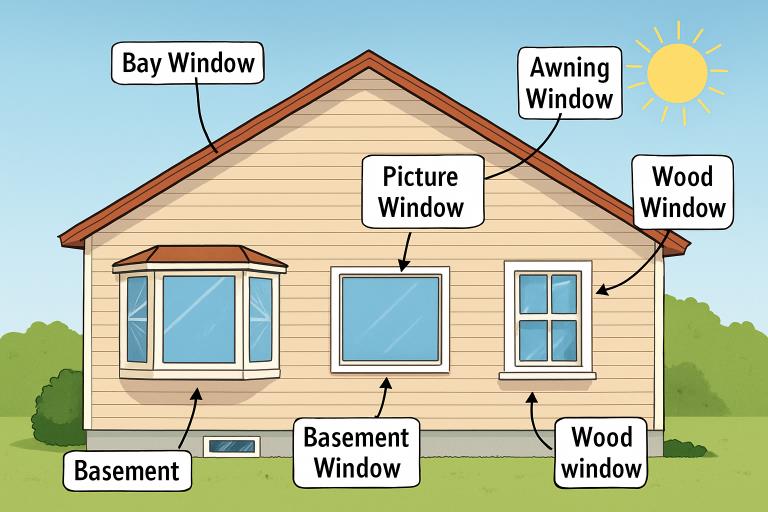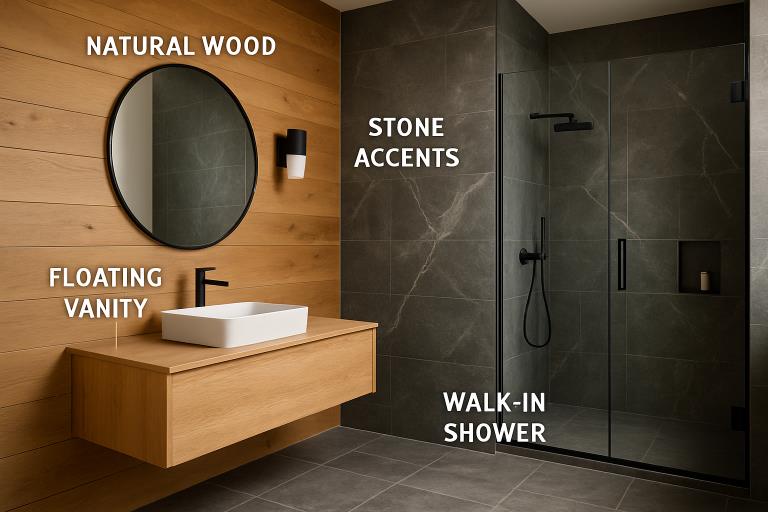Now Reading: Choosing the Right Replacement Windows for Your Home
-
01
Choosing the Right Replacement Windows for Your Home
Choosing the Right Replacement Windows for Your Home

Updating your home with new windows offers much more than a simple style upgrade. The proper selection can enhance energy efficiency, boost curb appeal, and increase your property’s market value. With a wide variety of options to consider, taking the time to make an informed choice is essential. For a seamless process and optimal results, many homeowners turn to professional replacement window installation to ensure a proper fit and performance from the outset.
Assessing your needs means exploring not only what looks best but also what will function well in your home’s environment. Whether you’re looking to address drafts, make your home quieter, or reduce monthly expenses, understanding your specific goals sets a strong foundation for your window replacement project.
Assessing Your Needs
Conduct a thorough evaluation of your current windows. Look for signs of age, such as fogged glass, difficulty opening and closing, or drafts during windy days. Noting these issues early on will help you prioritize features in your new windows—whether it’s better insulation, safety, or noise reduction. It’s also important to factor in your home’s architectural design, as choosing windows that blend with existing elements can maintain, or even enhance, visual harmony.
Some windows are better suited for colder climates, while others excel in humid environments. Consider the direction your windows face, as south- or west-facing windows may require additional coatings or tints to reduce solar gain.
Understanding Window Materials
The material of your window frames impacts durability, upkeep, and energy efficiency. Here are four of the most popular options:
- Vinyl:Known for being budget-friendly and requiring virtually no ongoing care. Vinyl frames are a top pick for energy efficiency, as they insulate well.
- Wood:Wood frames are valued for their classic appearance and excellent natural insulation properties. However, they do demand regular painting or sealing to prevent warping or rot.
- Fiberglass:Offering a potent combination of longevity and low maintenance, fiberglass windows resist swelling and shrinking in extreme temperatures, although they tend to be more expensive.
- Aluminum:These frames are robust yet lightweight, making them ideal in rainy or coastal areas. Their drawback is lower thermal insulation, but technological improvements continue to narrow the gap with other options.
Your choice will ultimately depend on your aesthetic preferences, willingness to perform upkeep, and budget. Homeowners may find that splitting window materials by facade (e.g., vinyl at the back and wood-clad in front) can efficiently balance cost and curb appeal.
Exploring Window Styles
Window styles influence not only a home’s appearance, but also its functionality:
- Double-Hung:Two sashes slide vertically, providing flexible airflow and easy cleaning. They’re suitable for both traditional and modern homes.
- Casement:Hinged at the side, opening outward like a door. Casement windows let in generous breezes and can be fully opened to maximize ventilation.
- Sliding:Sashes move horizontally, perfect for wide walls and tight exterior spaces. Their simple operation suits contemporary designs.
- Bay and Bow:Projects outward from the house, creating a nook inside and expanding your view. Bay windows are typically angular, while bow windows curve gently, lending elegance and added interior space.
Regardless of the style, consider ease of use, required ventilation, and the amount of natural light you want to invite into each room. Choosing a style that complements your home’s existing lines and colors ensures a timeless result.
Energy Efficiency Matters
Energy-efficient windows can drastically reduce your household’s heating and cooling costs—while keeping your living spaces more comfortable year-round. Look for these features to maximize performance:
- Low-E Glass:Special coatings reflect heat and block UV rays, helping maintain indoor temperatures and protect furniture from sun fade.
- Multiple Panes:Modern windows typically feature double or triple panes, separated by insulating gas. This dramatically improves thermal insulation.
- Gas Fills:Panes filled with argon or krypton gas slow heat transfer and help prevent condensation.
According to This Old House, nearly 89% of homeowners report noticeable savings on energy bills—often $25 to $50 per month—after upgrading to energy-efficient windows. Over time, these savings can help offset your initial investment, all while reducing your carbon footprint.
Budgeting for Your Project
Window replacement can vary significantly in price, depending on factors such as window size, material, style, and local labor rates. Plan your budget to include:
- The cost of your selected window units
- Installation and labor fees
- Unexpected expenses, such as repairs to window frames, wall structures, or addressing related issues like mold or rot
To get the most value for your money, solicit several estimates from different contractors. Be wary of offers that seem too good to be true, and ensure that product warranties and installation guarantees are clearly outlined before signing any agreement.
Importance of Professional Installation
Even the most expensive window can underperform if installed incorrectly. Professional installation ensures a proper seal, accurate fit, and maximizes the lifespan of your investment. Look for licensed, experienced contractors with established reputations and positive online reviews. Certifications from organizations like the American Window and Door Institute (AWDI) or InstallationMasters™ can offer added assurance of quality workmanship. Request references and confirm liability insurance to protect your home during the process.
Maintenance and Longevity
Some materials require little more than occasional washing, while others may need scraping, painting, or resealing every few years:
- Vinyl:Needs only occasional cleaning with mild soap and water, making it an ideal low-maintenance choice.
- Wood:Requires vigilant maintenance to prevent damage from moisture and pests. Annual painting or staining extends its life.
- Fiberglass:Extremely sturdy and unlikely to warp, peel, or crack. Periodic cleaning is sufficient to maintain its appearance.
By investing in low-maintenance options, you can minimize future upkeep and preserve your home’s value for much longer.
Conclusion
Choosing the right replacement windows means balancing function, style, energy efficiency, and budget. Evaluate your current windows and goals, study material and style options, and invest in reputable installation to enjoy reduced utility costs, easier maintenance, and an immediate boost in comfort and beauty. These carefully selected options will reward you—and your home—for years to come.




















